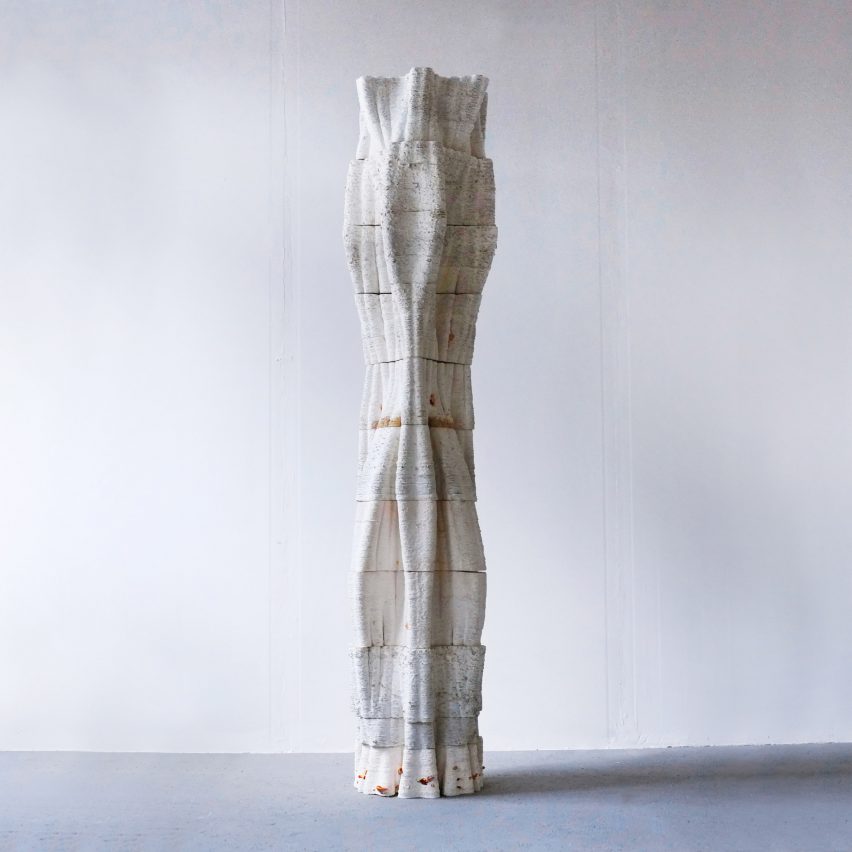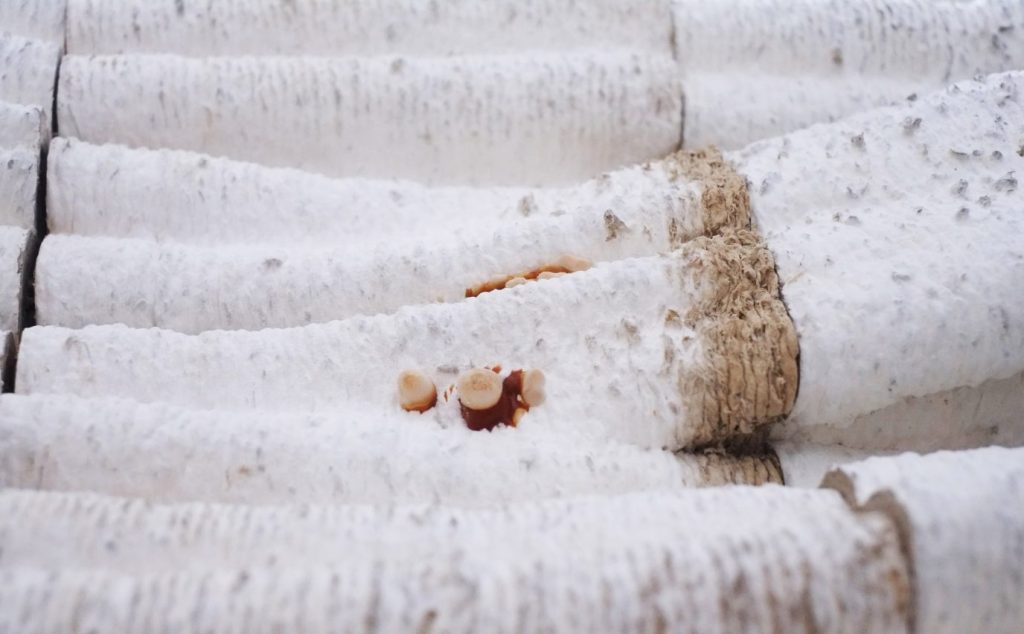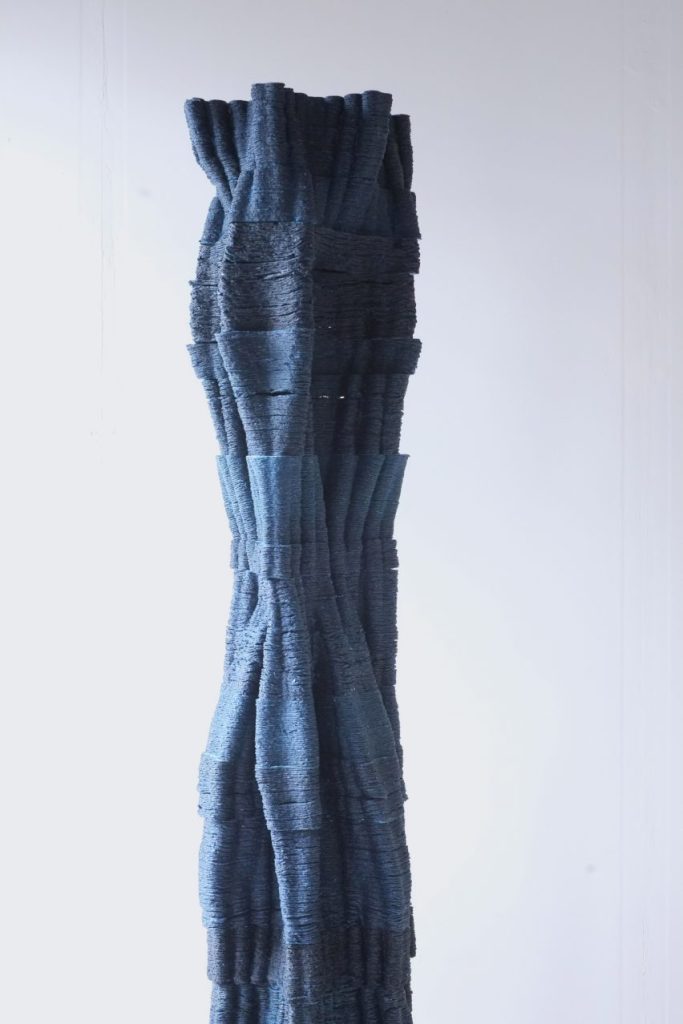Insiders and analysts predict the 3D printing trends to watch in our latest series of articles focused on the future of 3D printing.
London-based design studio Blast Studio has developed a new method of 3D printing with mycelium, the vegetative root of fungi, and used it to 3D print a living architectural building column.
Named the Tree Column, the biomass structure stands over two meters high and was algorithmically designed to provide both strength and the necessary growing conditions for mycelium.
According to Paola Garnousset, co-founder of Blast Studio, the idea was to create a multi-purpose structure that can be harvested for mushrooms while also serving as a functional building column.
She told Dezeen, “Our vision is to start a new type of living architecture that could self-repair and be harvested to feed people. The idea would be to 3D print a living structure in situ, which would be inoculated with different varieties of mushrooms, some with high structural resistance and some delicious ones.”
The design studio hopes to scale the unique project and eventually 3D print a large pavilion and entire buildings, enabling urban environments that actually feed the people living in them.

How was the Tree Column created?
To 3D print the Tree Column, Blast Studio started by shredding used coffee cups, boiling them, and mixing the paper pulp with mycelium to create a printable biomaterial. The biomaterial was then fed through a custom extrusion-based 3D printer to produce ten individual column modules. When stacked on top of each other, these modules form the Tree Column.
Interestingly, the geometry of the structure was generatively designed with a series of micro-pockets that work to trap moisture. These zones are what allow the mycelium to grow and expand.
Garnousset explains, “For the mycelium to grow well, it needs a humid environment away from airflow, like in the undergrowth where it grows naturally. We were inspired by the shapes of cacti that can successfully grow in the desert by capturing moisture from the wind and creating shade in their folds.”
The growth of the fungi is also aided by the paper cup pulp, which is used as a source of nutrition. Over time, the mycelium consumes the shredded cups and takes over the column, at which point it can begin producing edible mushrooms.

From food source to building element
Once the column serves its purpose as a source of food, it can be dried at high temperatures to kill the fungi and solidify the structure into a load-bearing building element. Blast Studio claims that the final, dead biomaterial will be similar to medium-density fiberboard (MDF) in strength, while also offering insulating and flame-retardant characteristics.
“The column is very light and good in both compression and flexion thanks to the elasticity of the material,” Garnousset adds. “In small constructions such as houses and small buildings, concrete could be substituted by mycelium.”
Crucially, when the Tree Column reaches the end of its service life, it can be recycled and simply reprinted. Blast Studio is in the process of developing a self-repairing version of the structure – one that still contains living mycelium that can re-grow over cracks to cover any external damage. The design studio’s immediate next steps involve 3D printing a large Tree Pavilion by the end of the year, which will comprise multiple Tree Columns.

The design freedom offered by additive manufacturing makes the technology a great fit for abstract architectural applications. Just recently, Swedish architects David Andreen and Ana Goidea designed and 3D printed the Meristem Wall, a 1.25 x 2.1 x 0.7m structure that integrates several functional features. This includes piping for electrical wiring and water flow, a complex ventilation network, and a computationally optimized surface structure that enables the wall to serve as an urban wildlife habitat.
Elsewhere, Sardinian architecture firm MASK Architects recently designed what it claims is the world’s first steel 3D printed collection of modular houses in the city of Orani, Sardinia. Named “Madre Natura” or “Mother Nature”, the project will be constructed using a novel steel 3D printed ‘exoskeleton’ construction system called EXOSTEEL.
Subscribe to the 3D Printing Industry newsletter for the latest news in additive manufacturing. You can also stay connected by following us on Twitter, liking us on Facebook, and tuning into the 3D Printing Industry YouTube Channel.
Looking for a career in additive manufacturing? Visit 3D Printing Jobs for a selection of roles in the industry.
Featured image shows the 3D printed Tree Column. Photo via Blast Studio.



